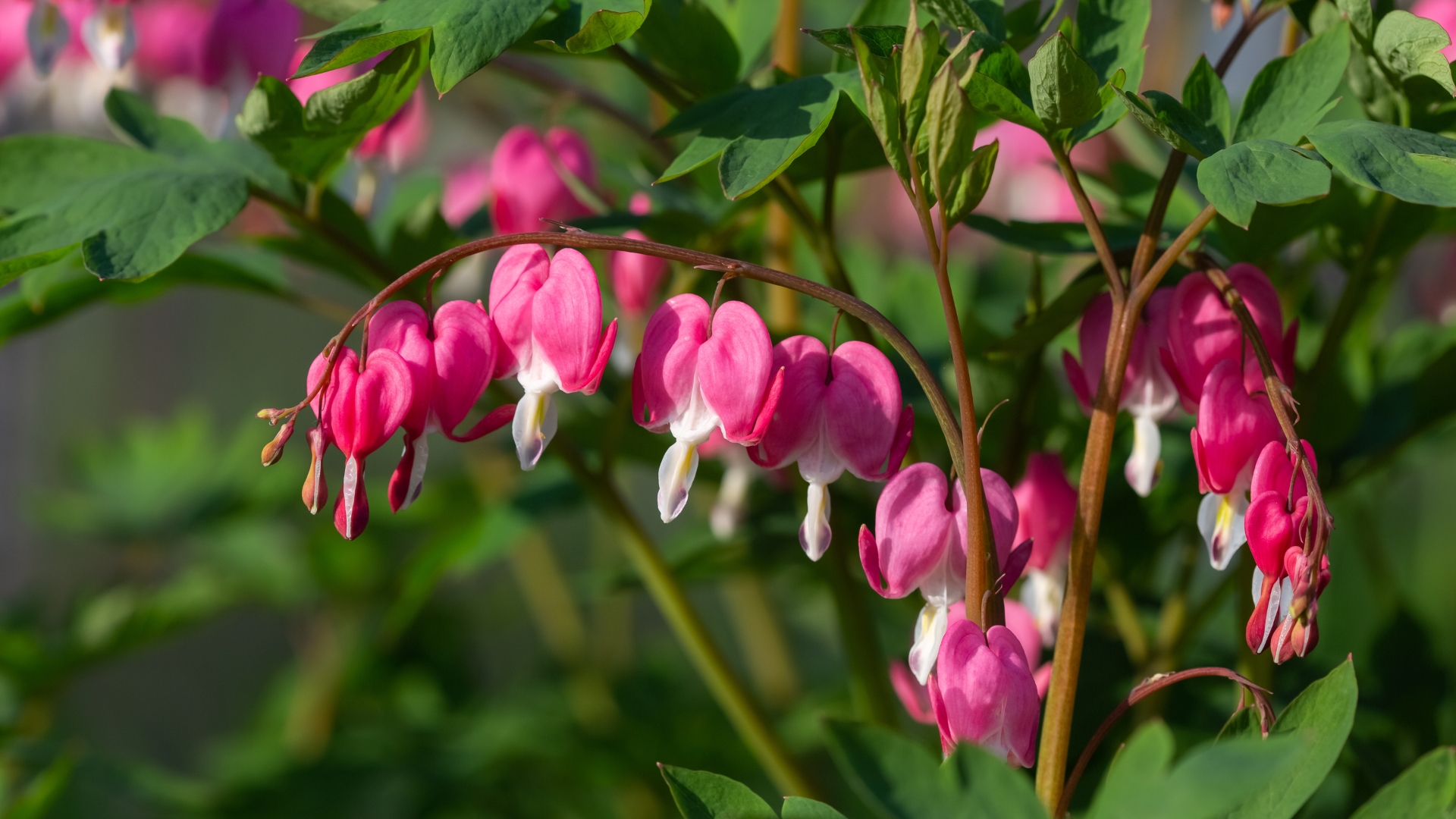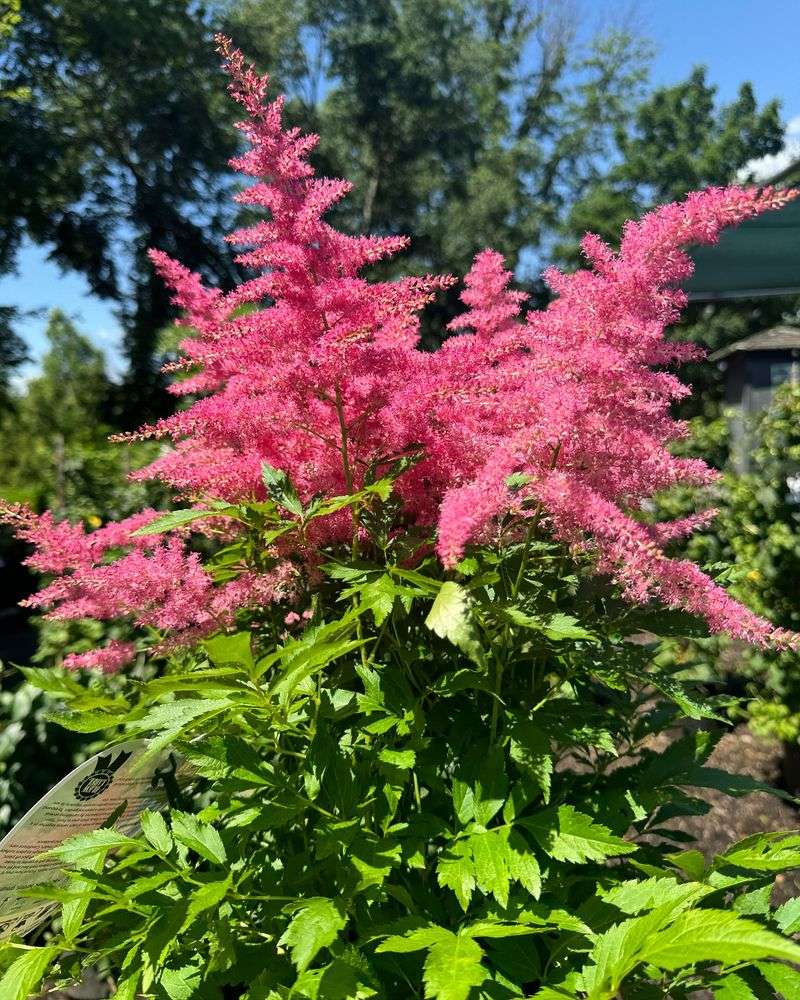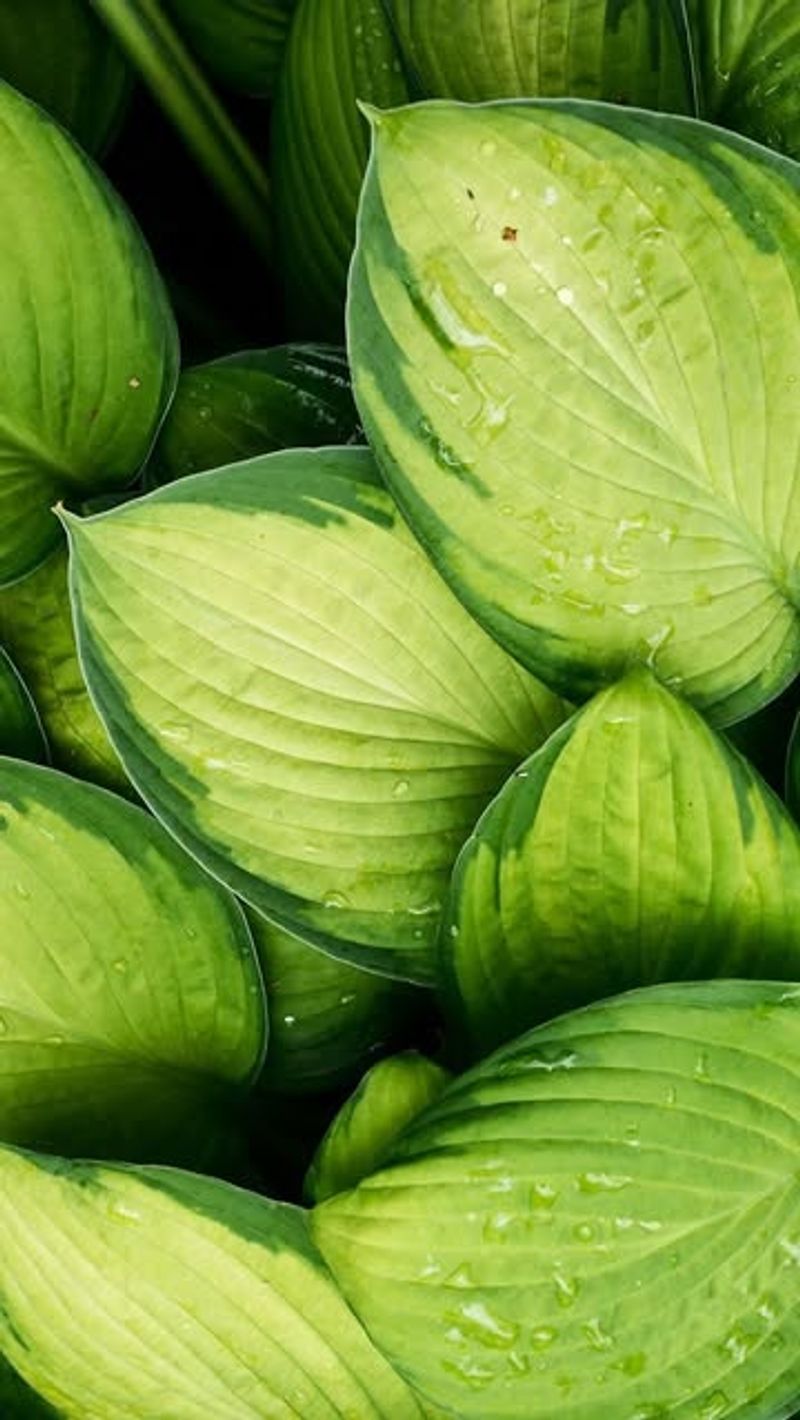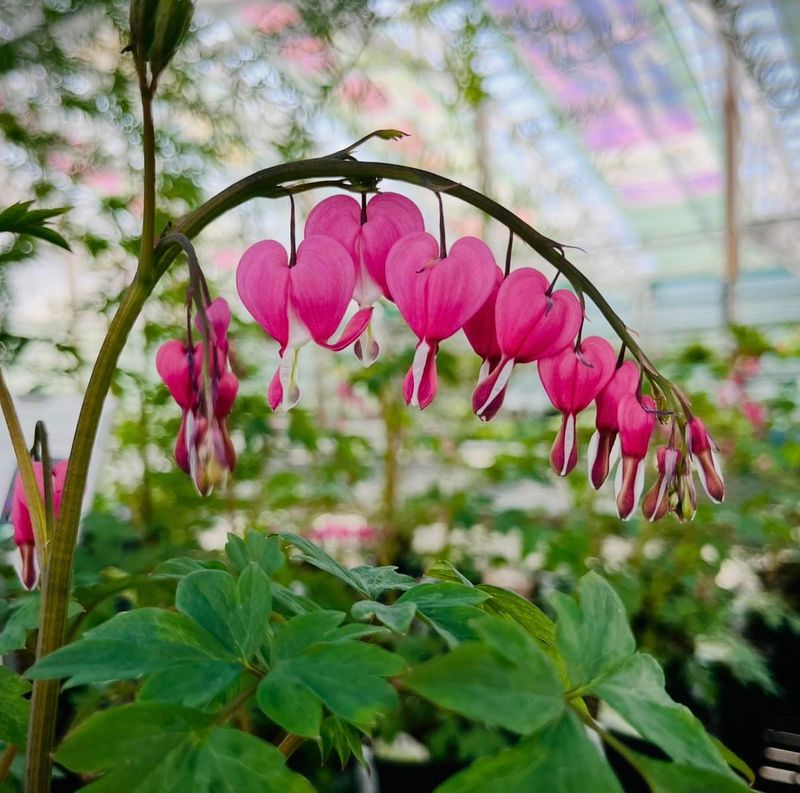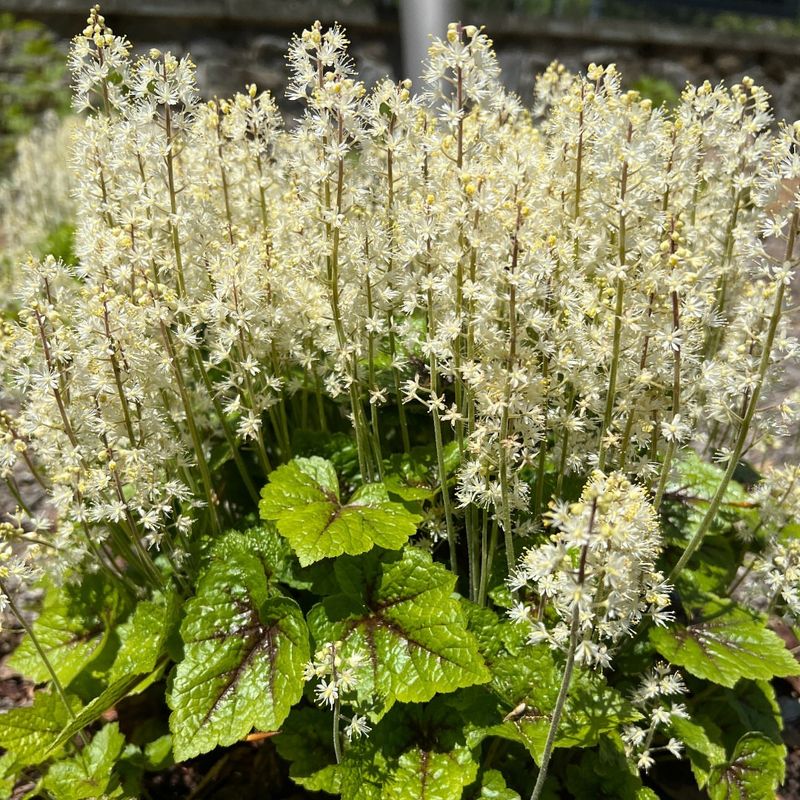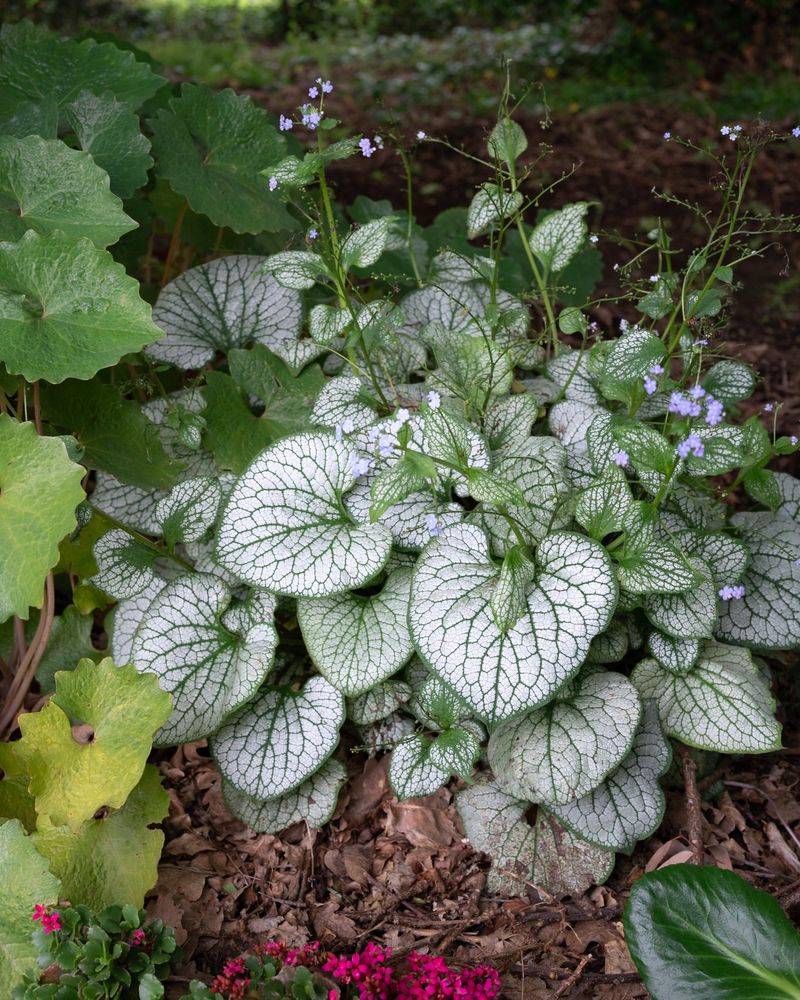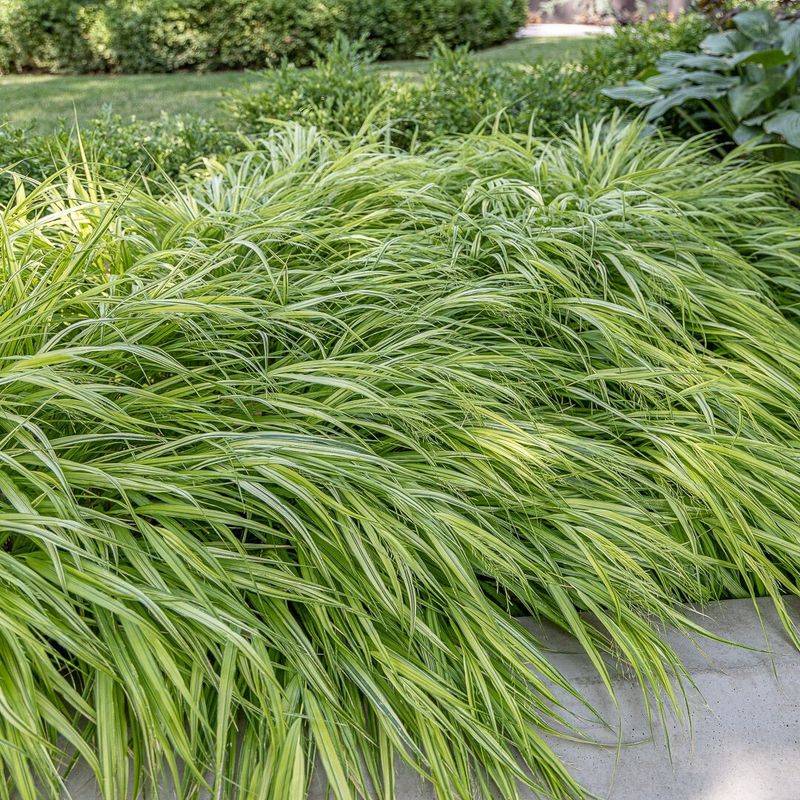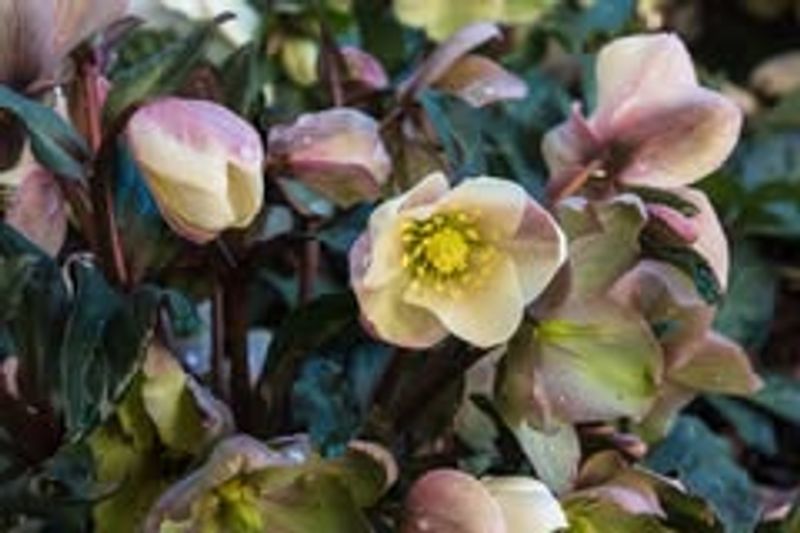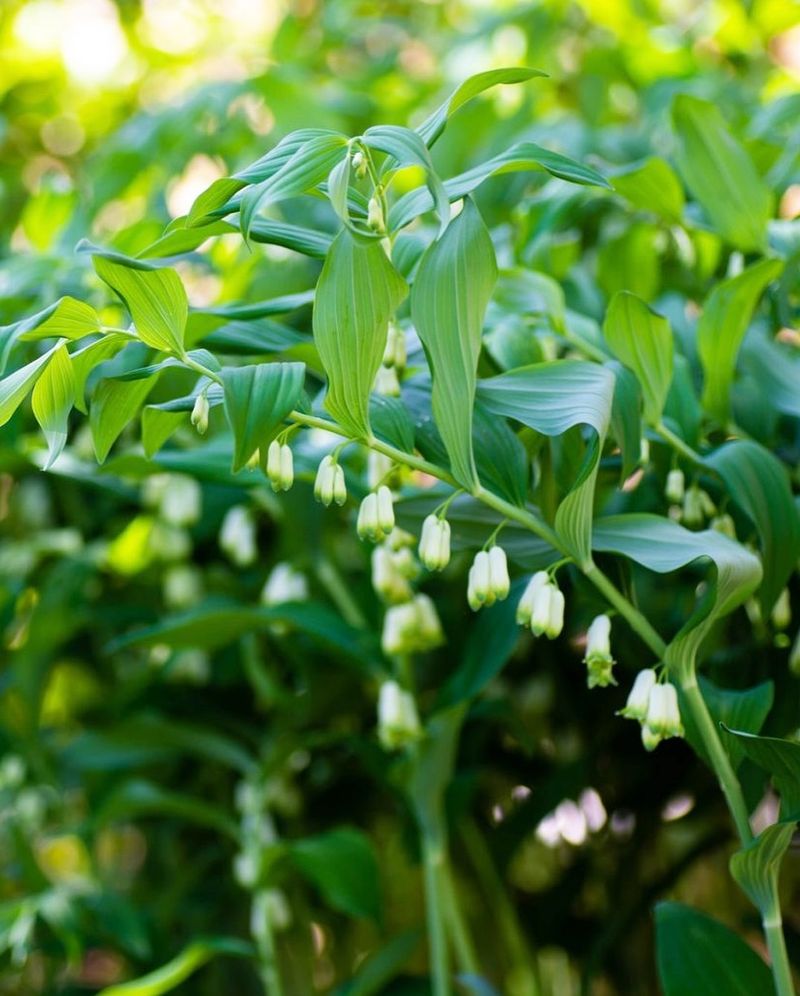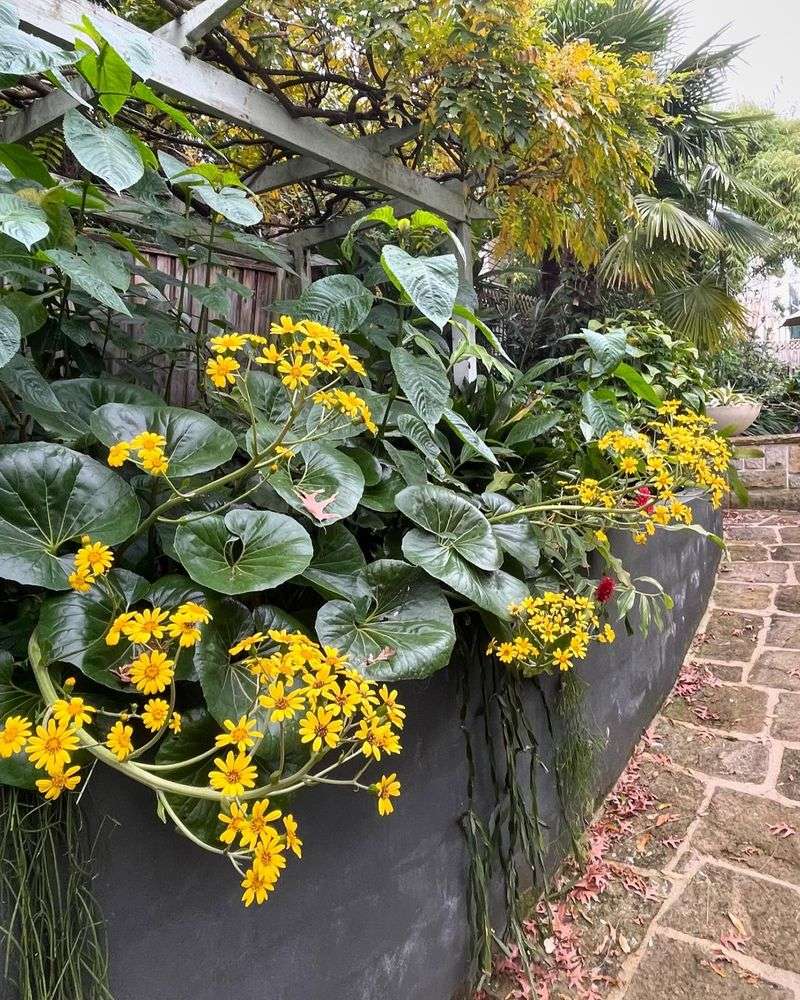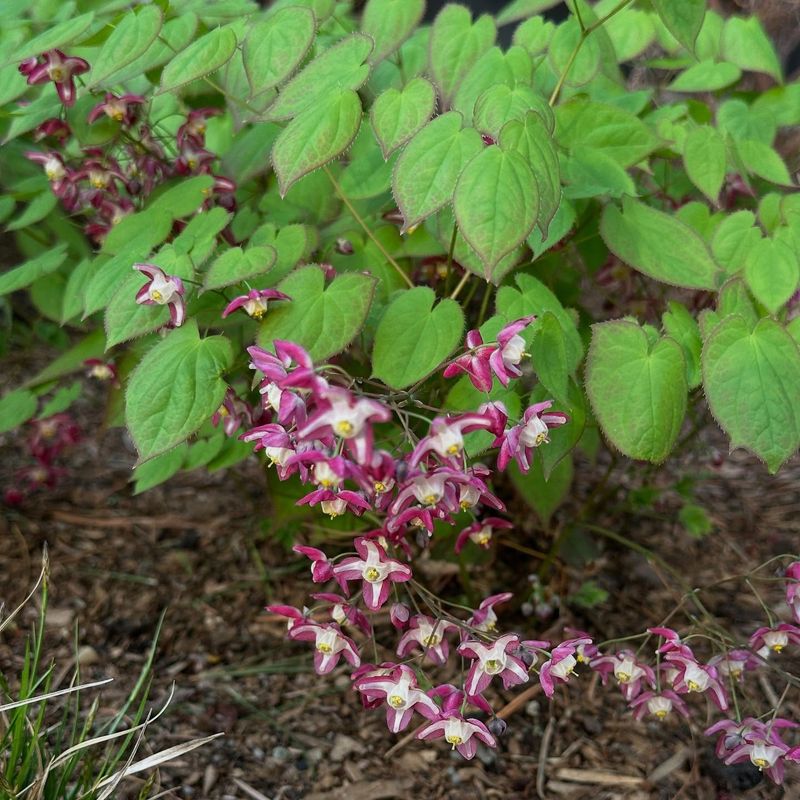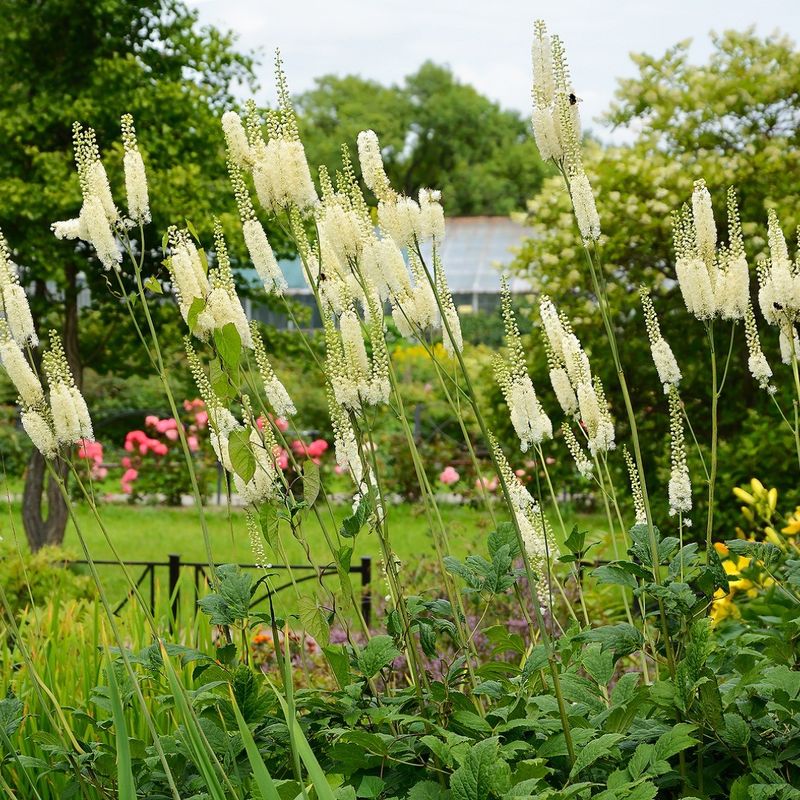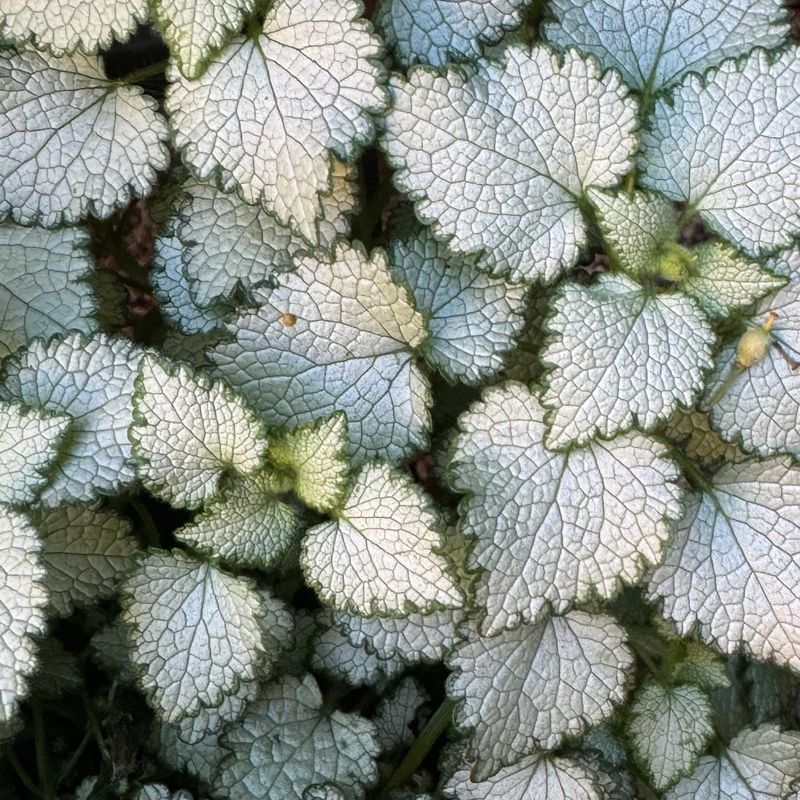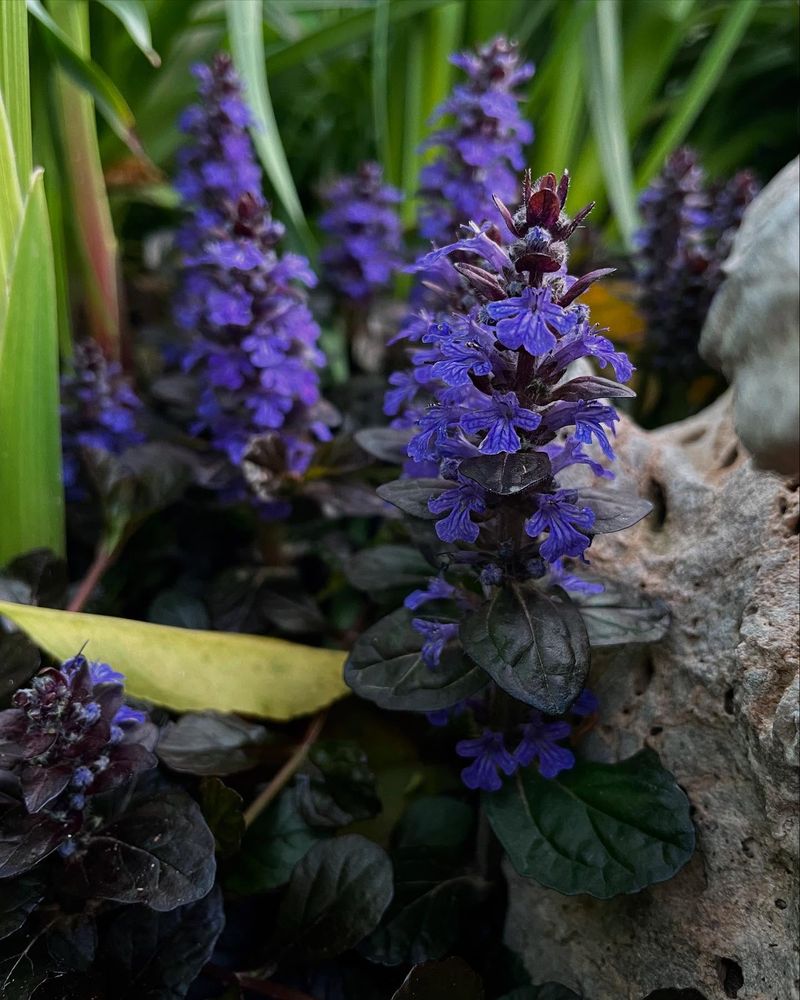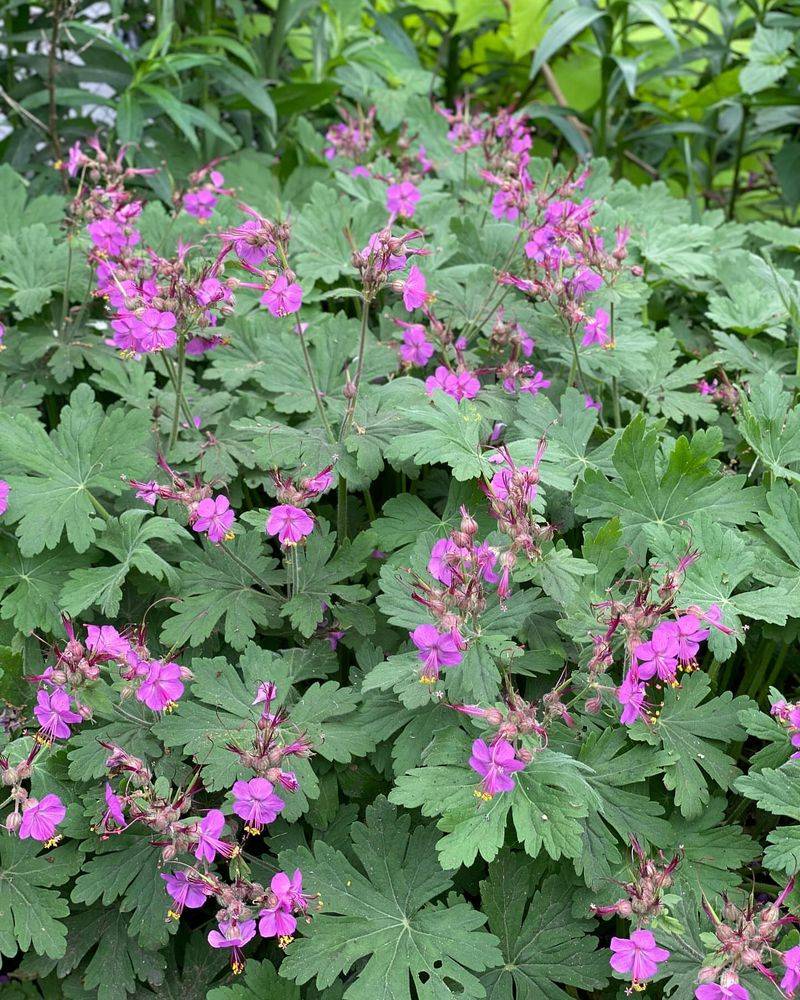Connecticut’s shady backyards don’t have to mean dull gardens. I’ve found perennials that love the cool, filtered light and reward you with blooms and lush foliage.
These shade-tolerant favorites make even the darkest corners come alive without demanding too much care. Perfect for adding color and texture where the sun doesn’t always shine.
Let’s explore the best perennials that turn shady spots into backyard gems!
1. Astilbe
Feathery plumes rise above fern-like foliage in these showstopping plants. Connecticut gardeners love how astilbes bring a splash of color to dark corners without demanding much attention.
The fluffy flower spikes come in shades from white to deep red, creating dramatic vertical interest. They prefer consistently moist soil, making them perfect for those damp, shady spots in your Connecticut yard.
2. Hosta
Known for their stunning foliage rather than flowers, hostas are the workhorses of Connecticut shade gardens. Their leaves range from tiny to enormous, with colors spanning blue-green, chartreuse, and variegated patterns.
Easy to grow and virtually indestructible, these plants return reliably year after year. Connecticut gardeners appreciate how hostas fill shady spaces with interesting textures and forms throughout the growing season.
3. Bleeding Heart
Heart-shaped blooms dangle from arching stems in this romantic shade lover. The classic variety sports pink hearts with white tips, though Connecticut gardeners can also find all-white cultivars.
After flowering in spring, bleeding hearts may go dormant during summer heat. Plant them alongside later-emerging perennials in your Connecticut garden to ensure continuous interest throughout the growing season.
4. Heuchera
Also called coral bells, these colorful plants offer year-round interest with their striking foliage. Modern varieties come in purple, caramel, lime green, and nearly every shade between, brightening Connecticut’s shadiest spots.
Delicate flower spikes appear in summer, attracting hummingbirds to your garden. Connecticut’s climate is ideal for heucheras, which appreciate the protection from intense afternoon sun that shade provides.
5. Ferns
Few plants say “woodland garden” better than ferns with their graceful, feathery fronds. Connecticut’s native species like Christmas fern and maidenhair fern thrive in the dappled light under deciduous trees.
Many varieties offer unique textures, from the lacy Japanese painted fern to the bold, leathery leaves of holly fern. These easy-care plants bring a touch of primeval beauty to shady Connecticut landscapes.
6. Tiarella
Commonly called foamflower, this native woodland plant produces frothy white or pink blooms in spring. The star-shaped flowers hover above attractive maple-like leaves that often feature dark markings along their veins.
Many Connecticut gardeners appreciate tiarella’s semi-evergreen nature, providing winter interest. These low-maintenance plants spread slowly to form attractive groundcover in those challenging shady spots of your Connecticut yard.
7. Pulmonaria
Spotted leaves are the signature feature of pulmonaria, earning it the common name lungwort. The silvery-white speckles brighten shady corners of Connecticut gardens, providing interest even when not in bloom.
Early spring brings clusters of flowers that change from pink to blue as they mature. Connecticut gardeners value pulmonaria for its deer resistance and ability to thrive in dry shade once established.
8. Brunnera
Heart-shaped leaves with silver variegation make brunnera (Siberian bugloss) a standout in Connecticut shade gardens. The silvery foliage catches what little light filters through trees, seeming to glow in dark corners.
Small blue forget-me-not flowers appear in spring, hovering above the distinctive leaves. Connecticut’s climate suits these woodland plants perfectly, especially in areas that stay consistently moist but not soggy.
9. Japanese Forest Grass
Graceful cascades of variegated foliage make this ornamental grass perfect for brightening shady spots. Unlike most grasses that demand full sun, Hakonechloa thrives in the dappled light common in Connecticut woodland gardens.
The arching habit resembles a miniature waterfall, especially when planted on slopes or in containers. Connecticut gardeners prize Japanese forest grass for its movement in the slightest breeze and striking gold or variegated forms.
10. Hellebore
Winter-blooming hellebores bring color to Connecticut gardens when everything else sleeps. These tough perennials produce nodding, cup-shaped flowers in shades from white to deep purple, often spotted or picoteed.
Evergreen foliage provides year-round structure in shady beds. Connecticut’s cold winters don’t bother hellebores, which often bloom while snow still covers the ground, earning their common name: Lenten rose.
11. Solomon’s Seal
Arching stems carry dangling white bells beneath elegant green leaves on this woodland native. The architectural form brings vertical interest to Connecticut shade gardens, contrasting beautifully with mounded plants like hostas.
Fall brings golden foliage and blue-black berries for added seasonal interest. Connecticut gardeners appreciate how this undemanding perennial spreads slowly to form graceful colonies in dappled shade.
12. Ligularia
Bold, dramatic leaves make ligularia a focal point in Connecticut shade gardens. Some varieties feature round, kidney-shaped foliage while others offer serrated, almost tropical-looking leaves in deep green or purple.
Tall yellow flower spikes rise above the foliage in summer, attracting butterflies. Connecticut’s naturally moist woodland soils suit ligularia perfectly, though they’ll need extra water during dry spells.
13. Epimedium
Delicate, dancing flowers float above heart-shaped leaves in this tough-as-nails shade perennial. Often called barrenwort or fairy wings, epimedium thrives in the dry shade beneath trees where other plants struggle.
New spring foliage emerges bronze or red before turning green. Connecticut gardeners value epimedium for solving that challenging combination of dry soil and deep shade common under mature trees.
14. Cimicifuga
Dramatic height makes bugbane (now botanically reclassified as Actaea) stand out in Connecticut shade gardens. Tall white or pink bottlebrush flowers rise 4-6 feet above ferny foliage, creating vertical drama in late summer.
Dark-leaved varieties add extra visual punch with their purple-black foliage. Connecticut’s woodland edges provide the perfect conditions for these native plants, which prefer rich, moist soil and protection from harsh afternoon sun.
15. Lamium
Silver-splashed leaves brighten the darkest corners of Connecticut gardens with this easy-growing groundcover. Also called dead nettle, lamium spreads to form a weed-suppressing carpet in areas where grass won’t grow.
Pink, purple, or white flowers appear in spring and often continue sporadically through summer. Connecticut gardeners find lamium perfect for difficult slopes or under trees where its shallow roots won’t compete with tree roots for water.
16. Ajuga
Glossy, colorful foliage in purple, bronze, or variegated patterns makes ajuga a versatile groundcover for Connecticut shade gardens. Also called bugleweed, this low-growing perennial forms a dense mat that effectively suppresses weeds.
Short spikes of blue flowers appear in spring, attracting early pollinators. Connecticut gardeners appreciate how ajuga handles poor soil conditions and spreads to fill difficult shady areas with minimal care.
17. Dicentra
Fern-like foliage and dainty heart-shaped flowers make woodland dicentra a charming addition to Connecticut shade gardens. Unlike their cousin bleeding heart, these native species (like Dicentra eximia) bloom throughout the summer rather than going dormant.
The blue-green leaves form neat mounds that complement other shade lovers. Connecticut’s climate perfectly suits these woodland natives, which prefer the cool, moist conditions found in dappled shade.
18. Geranium macrorrhizum
Aromatic leaves release a pleasant scent when brushed in this tough shade-tolerant perennial. Unlike fussy annual geraniums, this hardy species thrives in Connecticut’s climate, even in challenging dry shade conditions.
Magenta, pink, or white flowers appear in late spring above the attractive foliage. Connecticut gardeners value this plant’s deer resistance and ability to form weed-suppressing mats in difficult shady areas.

